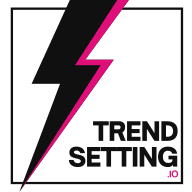What Are Creative Ways to Adapt to Ad-Blockers?
As ad-blockers become more prevalent, we turned to six digital marketing experts for their most creative strategies to stay ahead. From tweaking website scripts to personalizing email campaigns, these tips from Marketing Directors and Digital Marketing Heads offer fresh perspectives on navigating the ad-blocker challenge.
- Tweak Website Scripts to Dodge Ad-Blockers
- Diversify Revenue with Engaging Products
- Invest in Content Marketing and Native Ads
- Combine Physical Postcards with Digital Experiences
- Blend Ads into Social Media Feeds
- Personalize Email Campaigns to Bypass Ad-Blockers
Tweak Website Scripts to Dodge Ad-Blockers
One creative way I've adapted to ad-blockers in digital marketing is by getting my hands dirty with the website's scripts using tools like Chrome DevTools. For those who know their way around a bit of code, this method gives you a lot more control than simpler fixes like using Tampermonkey or just turning off JavaScript.
Here's how I do it: I fire up the DevTools in Chrome by either right-clicking on the page and selecting 'Inspect', or I just use the shortcut Ctrl + Shift + I.
Once I'm in, I head over to the Elements tab to check out the HTML structure of the page. This is where ads usually live, and where ad blockers do their thing, hiding or removing these bits so they don't show up. By tweaking these elements directly, I can dodge the ad blocker. For example, if an ad is hidden with a 'display: none' setting, I switch it to 'display: block'. Or if I see 'overflow: hidden' stopping a scroll, I change it to 'overflow: scroll' to get things moving again.
It really works, as long as you know your HTML and CSS. Plus, you've got to spot which script parts the ad blocker is going after.

Diversify Revenue with Engaging Products
Since a large portion of my blog's revenue relied on display ads, ad-blockers posed a significant challenge. Rather than penalizing users who employed ad-blockers, I decided to shift my focus. My goal was to allow people to engage with my content freely, prioritizing their experience and brand connection.
To adapt, I significantly reduced the number of ads, ensuring the experience was pleasant enough that users wouldn’t feel the need for ad-blockers. Then, I diversified revenue streams by integrating products—both informational and physical, such as books. This strategy not only made the content more engaging but also increased income per view, as product sales typically offer higher returns than traditional ads.
The result? A more satisfying user experience and a boost in revenue, all without compromising the value of my content. For others facing ad-blocker challenges, the key is to offer something more valuable than just ads—products or services that enhance the overall user experience.

Invest in Content Marketing and Native Ads
One creative way I’ve adapted to ad-blockers in digital marketing is by investing in content marketing and native advertising. Instead of relying on traditional display ads, I create high-quality, valuable content that naturally integrates with the platforms where it’s published.
For example, I collaborate with blogs and online publications to produce sponsored articles that provide genuine insights while subtly promoting our services. This content bypasses ad-blockers because it’s embedded within the site’s organic content. By focusing on delivering value through informative and engaging content, I ensure that the message reaches the audience without being intrusive or blocked.
Combine Physical Postcards with Digital Experiences
I got ideas from an unexpected source when ad blockers began consuming our internet reach: my grandmother's recipe collection. I came to see how intimate and treasured these analog messages were one day as she was leafing through her handmade cards.
This sparked an idea. We produced a small run of exquisitely crafted, real postcards showcasing our offering. The twist, though, was that every card featured a QR code that linked to a customized digital experience.
We sent these cards to a small set of clients, asking them to pass the experience along to a friend. The cards stood out in a sea of digital noise because of their tactile quality, and consumers delighted in the mix of classic appeal with contemporary technology.
The effort had a domino effect. Curious friends scanned the codes; recipients posted pictures of their cards on social media; and suddenly we had an organic, ad-blocker-proof marketing chain. It helped me to realize that occasionally stepping back into the physical world is the best approach to sorting through digital clutter.

Blend Ads into Social Media Feeds
As a digital marketer, my pro-tip for adapting to ad-blockers is to run ads on social media platforms. While users are increasingly finding new and innovative ways to tackle ad-blockers, integrating your ads into a consumer’s larger social media feed helps them blend more seamlessly with the content and, in turn, makes them less likely to be blocked. For instance, Facebook and Instagram are perfect for tailored ads. Sponsored content that matches the style, interests, and behaviors of the target audience will minimize the likelihood of ad-blockers being used.
The goal is always to prioritize relevance over reach, so make slight modifications to each ad. Your ad on Facebook should look different from the one on Instagram, as each platform appeals to different age groups. You should also consider investing in influencer marketing. If there’s one thing I’ve learned and experienced as a marketer, it’s that ads that feel like ads are highly disruptive. Instead, aim to make your ads feel like personalized recommendations. It’s ironic, but the less your ad feels like a traditional ad, the more likely your audience will be inclined to engage with it.

Personalize Email Campaigns to Bypass Ad-Blockers
To creatively adapt to ad blockers, I focused on building a robust email marketing strategy driven by personalization and engagement. Instead of relying on traditional display ads, I turned my attention to nurturing an in-house email list and creating highly customized campaigns.
What our marketing team did was segment our audience based on behavior, purchase history, and preferences to deliver content that truly resonated with them. For example, we developed exclusive content like early access to new products, personalized recommendations, and special discounts tailored to each segment. To keep things interactive, we included polls, quizzes, and user-generated content showcases, which encouraged direct participation and built a community around our brand.
By doing this, we didn’t just bypass the ad blockers; we also established a direct, unobstructed communication channel with our audience that allowed us to maintain a meaningful connection, build trust, and drive conversions organically. This strategy proved to be highly effective in sustaining engagement, as our emails offered tangible value rather than just a sales pitch. As a result, we experienced higher open and click-through rates and a stronger relationship with our customers, which ultimately boosted our sales and brand loyalty.



